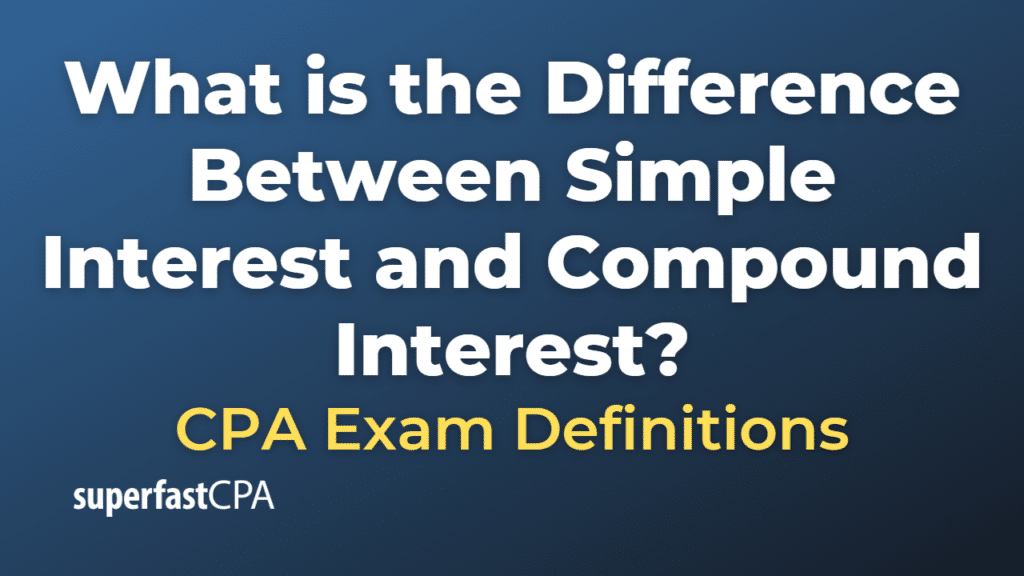Difference Between Simple Interest and Compound Interest
Simple interest and compound interest are two methods of calculating interest on a loan or investment, but they work in different ways:
- Simple Interest:
Simple interest is calculated only on the original amount (principal) that was deposited or borrowed. The formula for calculating simple interest is:Interest = Principal x Rate x Timewhere- Principal is the initial amount of money
- Rate is the annual interest rate (in decimal form)
- Time is the period of time the money is deposited or borrowed for (in years)
- Compound Interest:
Compound interest, on the other hand, is calculated on the initial principal and also on the accumulated interest of previous periods. This means you earn interest on your interest, which can significantly increase the growth of an investment or the cost of a loan over time.The formula for calculating compound interest is:A = P (1 + r/n)^(nt)where- A is the amount of money accumulated after n years, including interest
- P is the principal amount (the initial amount of money)
- r is the annual interest rate (in decimal form)
- n is the number of times that interest is compounded per year
- t is the time the money is invested or borrowed for, in years
In summary, the key difference between simple interest and compound interest is that simple interest is calculated solely on the initial amount of money, while compound interest is calculated on the initial amount plus any interest previously earned or charged.
Example of the Difference Between Simple Interest and Compound Interest
Suppose you deposit $5,000 in a savings account. The bank offers you a 5% annual interest rate. Let’s compare what happens if that interest is calculated as simple interest versus compound interest.
Example of Simple Interest:
If the interest is simple interest, it will be calculated only on the initial $5,000 each year. So, the interest for the first year would be:
Interest = Principal x Rate x Time = $5,000 x 0.05 x 1 = $250
You would earn $250 in interest each year, no matter how long you keep the money in the bank.
Example of Compound Interest:
Now let’s consider the case where the interest is compounded annually.
In the first year, you would still earn $250 in interest because it’s calculated on the initial principal:
Interest = Principal x Rate x Time = $5,000 x 0.05 x 1 = $250
However, in the second year, interest would be calculated on the new total of $5,250 ($5,000 original principal + $250 interest from the first year), not just the original $5,000:
Interest = Principal x Rate x Time = $5,250 x 0.05 x 1 = $262.50
So, you would earn more interest in the second year because you’re earning interest on the interest from the first year. And this would continue in the subsequent years, with the interest amount increasing each year as long as you keep the money in the bank.
This example demonstrates the power of compound interest and why it can significantly increase savings or investment growth over time compared to simple interest. It’s also why loans with compound interest can end up costing significantly more than loans with simple interest.













